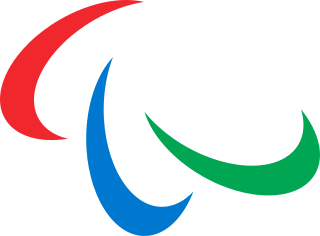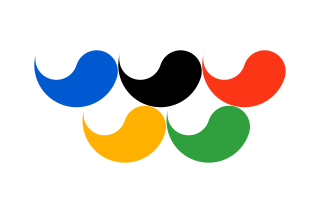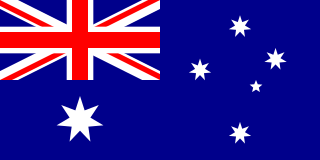
The Winter Olympic Games, also known as the Winter Olympics, is a major international multi-sport event held once every four years for sports practiced on snow and ice. The first Winter Olympic Games, the 1924 Winter Olympics, were held in Chamonix, France. The modern Olympic Games were inspired by the ancient Olympic Games, which were held in Olympia, Greece, from 776 BCE to 394 CE. The Baron Pierre de Coubertin of France founded the International Olympic Committee (IOC) 1,500 years later in 1894, leading to the first modern Summer Olympic Games in Athens, Greece in 1896. The IOC is the governing body of the Olympic Movement, with the Olympic Charter defining its structure and authority. The original five Winter Olympic Sports were bobsleigh, curling, ice hockey, Nordic skiing, and skating. The Games were held every four years from 1924 to 1936, interrupted in 1940 and 1944 by World War II, and resumed in 1948. Until 1992, the Summer Olympic Games and the Winter Olympic Games were held in the same year. A decision to change this was made in 1986, when during the 91st International Olympic Committee session, IOC members decided to alternate the Summer Olympic Games and the Winter Olympic Games on separate four-year cycles in even-numbered years. Also, at that same congress it was decided that 1992 Winter Olympics would be the last to be held in the same year as the Summer Games and that to change the rotation, the games that would be held in 1996 would be brought forward by two years, being scheduled to 1994. After those games, the next were to be held in 1998 when the four-year Olympic Cycle resumed.

The 1992 Winter Olympics, officially known as the XVI Olympic Winter Games and commonly known as Albertville '92, were a winter multi-sport event held from 8 to 23 February 1992 in and around Albertville, France. Albertville won the bid to host the Winter Olympics in 1986, beating Sofia, Falun, Lillehammer, Cortina d'Ampezzo, Anchorage, and Berchtesgaden. The 1992 Winter Olympics were the last winter games held in the same year as the Summer Olympics. The Games were the fifth Olympic Games held in France and the country's third Winter Olympics, after the 1924 Winter Games in Chamonix and the 1968 Winter Games in Grenoble. This games was the first of two consecutive Olympic games to be held in Western Europe, preceding the 1992 Summer Olympics in Barcelona, Spain.

The 1994 Winter Paralympics, the sixth Paralympic Winter Games, were held in Lillehammer, Norway, from 10 to 19 March 1994.The Lillehammer Paralympics were the second time that the Games were held in Norway, after the 1980 Winter Paralympics in Geilo. 471 athletes from 31 countries participated, with Norway claiming the most gold medals ahead of Germany. This was the first Paralympics which the International Paralympic Committee had 100% involvement and responsibility and the first Games with their own logo.

The 1998 Winter Paralympics, the seventh Paralympic Winter Games, were held alongside the Winter Olympics in Nagano, Nagano Prefecture, Japan from 5 to 14 March 1998. They were the first Paralympic Winter Games to be held in Asia. 571 athletes competed in Nagano; as 2022 it remains the highest number of athletes competing at any Winter Paralympics.

The 1988 Winter Paralympic Games were the fourth Winter Paralympics, held again in Innsbruck, Austria. These were the last Paralympics to be held in a separate location from the Olympics. Beginning in 1992, the Olympics and the Paralympics were held in the same city or in an adjacent city. These Paralympics were not held at the same Olympic venue in Calgary, Canada, because of financial and recruiting difficulties. A total of 377 athletes from 22 countries took part. The USSR competed for the first and only time. Sit-skiing was introduced as another event in both the Alpine and Nordic skiing competitions. Other sports were biathlon and ice sledge speed racing. Ice sledge speed racer Knut Lundstroem from Norway was the most successful athlete, winning four gold medals in the 100m, 500m, 1000m and 1500m events.

The 2006 Winter Paralympic Games, the ninth Paralympic Winter Games, took place in Turin, Italy from 10 to 19 March 2006. These were the first Winter Paralympic Games to be held in Italy. They were also the first Paralympics to use the new Paralympics logo.
The 1992 Winter Olympics, officially known as the XVI Olympic Winter Games, were a winter multi-sport event held in Albertville, France, from February 8 to 23. A total of 1,801 athletes representing 64 National Olympic Committees (NOCs) participated in 57 events from 12 different sports and disciplines. In a break from tradition, the medals were primarily made of crystal rather than metal: gold, silver, or bronze was used only on the border.
The Nordic combined event at the 1992 Winter Olympics consisted of two athletic disciplines, held from 11 February to 17 February. The ski jumping portion and the 15 km cross-country portion of the Nordic Combined event were both held at Courchevel-le Praz. A temporary cross-country stadium was constructed in a field directly adjacent (east) to the Tremplin du Praz ski jump outrun. All other cross-country and Biathlon competitions were held at Les Saisies.
The 1992 Winter Olympic games cross-country skiing results. The cross-country skiing competitions were held at Les Saisies, about 40 km from the host city Albertville.
Biathlon at the 1992 Winter Olympics consisted of six biathlon events. They were held at Les Saisies, about 40 kilometres from the host city of Albertville. The events began on 11 February and ended on 20 February 1992. The 1992 Games were the first in which women competed in biathlon.

Paralympic cross-country skiing is an adaptation of cross-country skiing for athletes with disabilities. Paralympic cross-country skiing is one of two Nordic skiing disciplines in the Winter Paralympic Games; the other is biathlon. Competition is governed by the International Paralympic Committee (IPC).

The Winter Paralympic Games is an international multi-sport event where athletes with physical disabilities compete in snow and ice sports. The event includes athletes with mobility impairments, amputations, blindness, and cerebral palsy. The Winter Paralympic Games are held every four years directly following the Winter Olympic Games and hosted in the same city. The International Paralympic Committee (IPC) oversees the Games. Medals are awarded in each event: with gold for first place, silver for second, and bronze for third, following the tradition that the Olympic Games began in 1904.

The United Kingdom of Great Britain and Northern Ireland competed at the 1992 Winter Paralympics held in Tignes and Albertville, France. The team was known by it shortened name of Great Britain, for identification purposes.

France was the host country of the 1992 Winter Paralympics in Tignes-Albertville. The country's delegation was the joint second largest at the Games, consisting in 31 competitors in all three sports: alpine skiing, biathlon and cross-country skiing.

The Unified Team was the name used for the sports team of eleven former constituent republics of the Soviet Union (excluding Estonia, Georgia, Latvia, and Lithuania) at the 1992 Winter Paralympics in Albertville and the 1992 Summer Paralympics in Barcelona. The IOC country code was EUN, after the French name, Équipe Unifiée.
For the 1992 Winter Olympics in Albertville, France, a total of thirteen sports venues were used. Val-d'Isère has been part of the Alpine Skiing World Cup since the late 1960s while Tignes served as host of the first Freestyle World Ski Championships in 1986. Most of the venues used were constructed between 1987 and mid 1990 with the test events taking place in late 1990 and early 1991. It was the last Winter Olympics with an outdoor speed skating rink which led to weather issues for three of the ten events. Three cross-country skiing events were run in snowstorms while the men's 20 km biathlon was found to be 0.563 km (0.350 mi) too short. The downhill events in alpine skiing were criticized for being too steep. Freestyle skiing made its official debut at these games with the men's winner being stormed after his win while the women's winner won her event in a snow storm. La Plagne hosted the skeleton World Championships in 1993 while Val-d'Isère hosted the Alpine World Ski Championships in 2009. Some of the venues will be used again during the 2030 Winter Olympics, when the main host city will be Nice.
Matthew Stockford is a British former Paralympic skier who won medals at the 1992 Winter Paralympics and 1994 Winter Paralympics. Stockford broke his back in a skiing accident in 1985. He competed using a monoski – a specially fitted chair over a single ski that includes seat belts and other strapping, as well as a suspension device to minimise wear and tear on the skier's body.

Australia competed at the 1992 Winter Paralympics in Tignes and Albertville in France. They were the first winter Paralympics to be celebrated concurrently with the Olympic Games. The official logo of the Games was designed by Jean-Michel Folon. It depicts a bird with broken wings, soaring high across the peak of a mountain. This was used to reflect the sporting abilities of the athletes at the Games. The official mascot, Alpy, designed by Vincent Thiebaut, represented the summit of the Grande Motte mountain in Tignes. Alpy was shown on a mono-ski to demonstrate its athleticism and the colours of white, green and blue were used to represent purity/snow, hope/nature and discipline/the lake. The 1992 Games were where Australia won their first winter medals at the Paralympics. Michael Milton won Australia's first gold with a win in the men's slalom LW2. Milton also won a silver medal in the men's super-G LW2. At these Games, Australia was represented by 5 male athletes. Australia was placed 12th in the overall medal tally for the Winter Games winning a total of 4 medals: 1 gold, 1 silver and 2 bronze.

The 1994 Winter Paralympics were held in Lillehammer, Norway. Australia sent six male skiers, who won three gold, two silver and four bronze medals. Australia, at the time, achieved their best ever performance at a Winter Paralympics, finishing 5th overall in the alpine skiing competition, 9th in the medal standings, and 11th in the total medal count out of 31 nations.

Canada competed at the 1992 Winter Paralympics in Tignes-Albertville, France from March 25 to April 1, 1992. Canada entered 19 athletes in two of the three disciplines at the Games; fifteen in Alpine skiing, and four in Nordic skiing.













